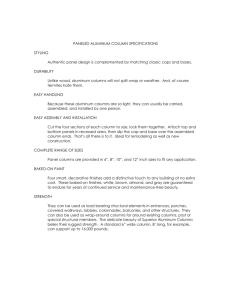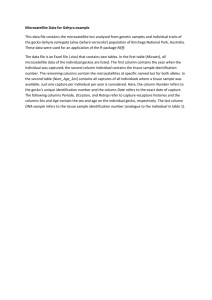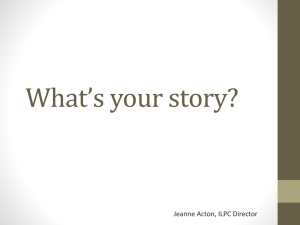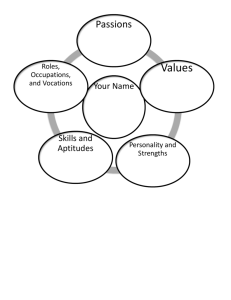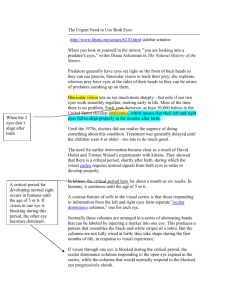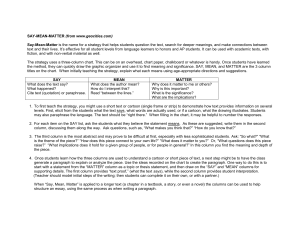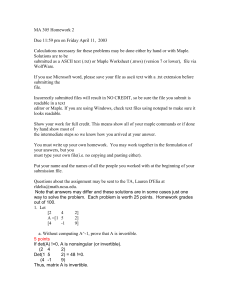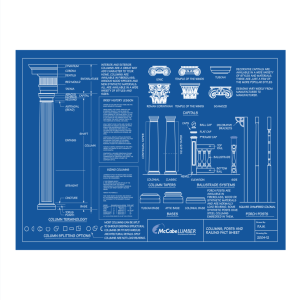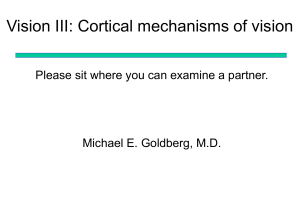Columns and Hypercolumns in Visual Cortex
advertisement
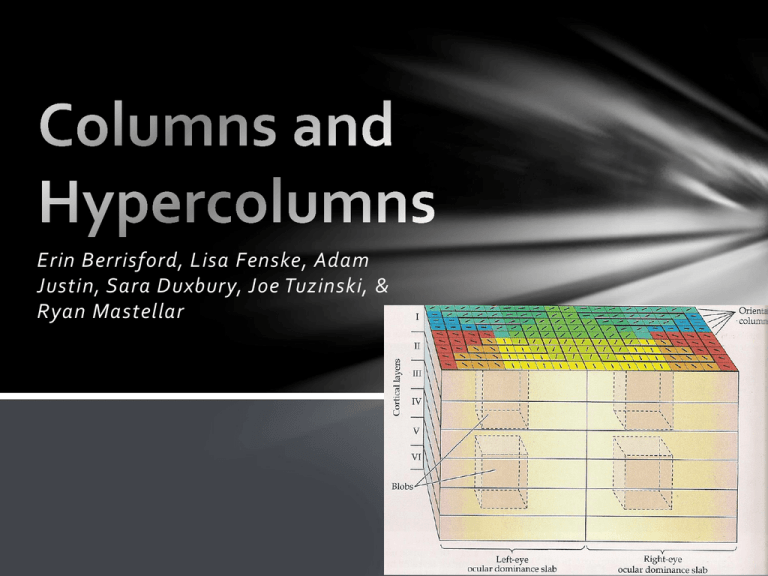
Erin Berrisford, Lisa Fenske, Adam Justin, Sara Duxbury, Joe Tuzinski, & Ryan Mastellar History Hubel and Wiesel Used a recording electrode to push farther and farther down into the cortex, finding neurons with similar response properties Neurons with similar orientation are arranged in vertical columns throughout the cortex What is a column? A column is a trio of vertical cells Respond to similar stimuli and characteristics The cells in each column work together to interpret a stimuli Take a thick, yellow, slanted line One cell interprets the yellow, another the thickness, another orientation- all these cells work together to see a yellow line that is thick and slanted Each column prefers input from the left or right eye Located in the striate cortex Each column covers about .5mm Hypercolumns Contains at least two sets of columns that function as a unit Each is like a mini computer Each perceives one small portion of the visual field Enough columns to cover every possible orientation (0180 degrees) Each hypercolumn is about 1mm across Half of the hypercolumn responds to light falling on the left retina, the other half responds to light falling on the right retina Each hypercolumn has enough cells to respond to light, orientation, and bar width Includes a pair of columns called blobs Blobs Function unclear CO blob columns are thought to aid in processing color (CO stands for cytochrom oxidase- a staining technique enzyme) Interblob regions process motion and spatial structure Demonstration http://www.sinauer.com/wolfe2e/chap3/hypercolumnsF.htm Scan in picture and place here To Sum up Hypercolumns are used by the striate cortex to analyze size, shape, speed, and direction Each cell is in charge of a certain characteristic but all work together to create the pictures we interpret from the visual world


